
Empowering You With Knowledge
At Rivertowns Orthodontics, we believe that patient education is crucial to successful treatment. Explore our patient information section to learn more about early orthodontic treatment and how it can benefit your child’s future smile.
First Visit Forms

Retention
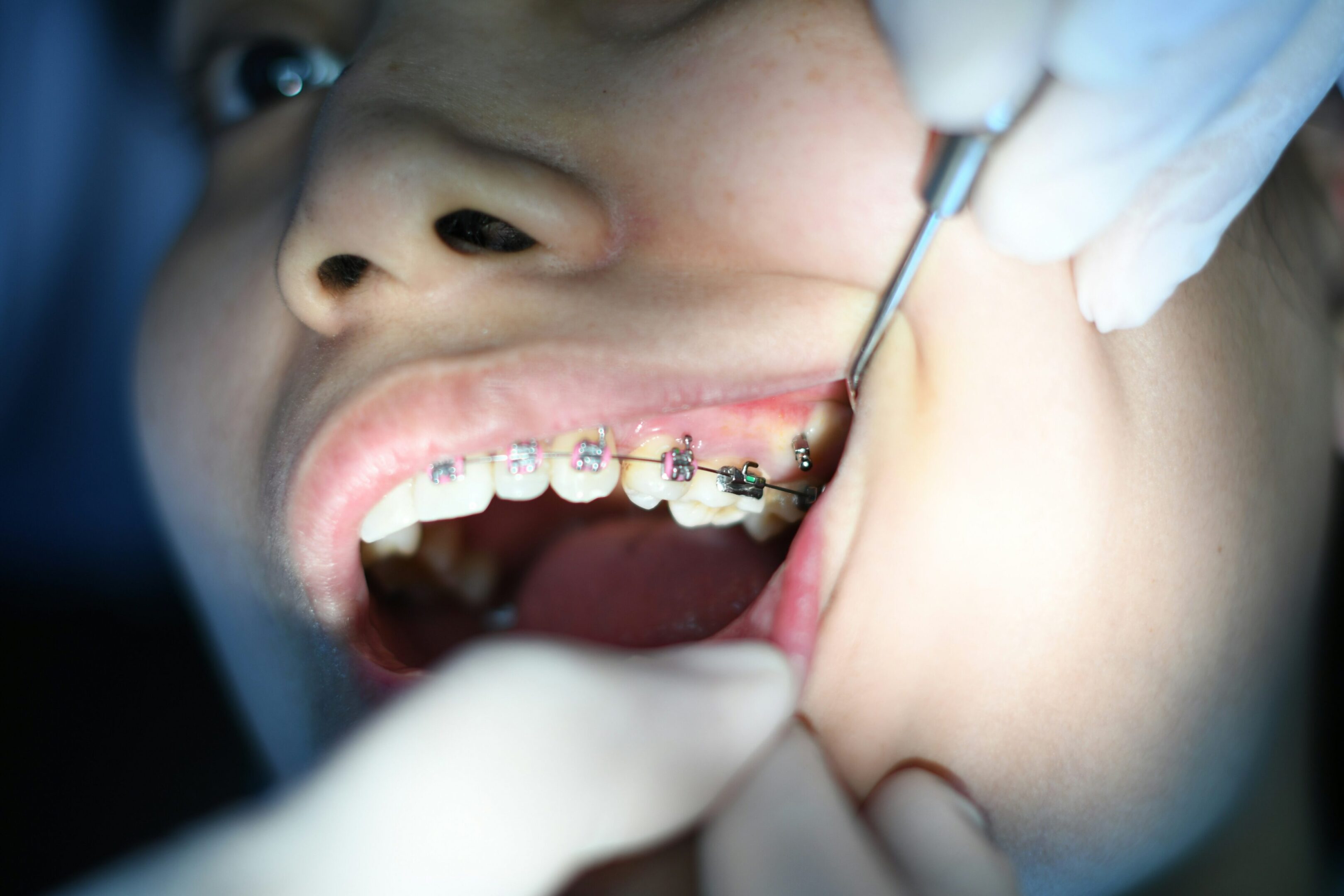
How Long is the Retention Phase?
When we remove your braces, or after the last aligner for Invisalign, we will begin the retention phase of your treatment. The retention phase lasts for a minimum of 3 years. Your final orthodontic result depends on your retainers, so follow through with the hard work you have put in so far. Remember to remove your retainer before brushing and to brush your retainer with toothpaste or mouthwash and COLD water before replacing it in your mouth. Removable retainers are worn full time for the first TWO MONTHS except for eating, brushing/flossing, and special occasions (singing, sports that require a mouth guard, etc.). After 2 months, you will cut down to night time wear. Over time, you will then reduce your wear to 2-3 nights per week as instructed when you come in for your retention appointments.
Factors Causing Movement in the Retention Phase
Recent studies have indicated that growth occurs in small amounts throughout life. Thus, teeth and jaws can shift at any time in varying degrees, which usually depend on the original malocclusion, the facial muscle structure and the amount of residual growth.
The retention phase of treatment allows for a majority of growth and settling to occur so that the teeth and jaws are as stable as possible. However, living tissue is always subject to change from posture, muscle pressure and oral habits such as biting your nails or clenching/grinding your teeth which can cause your teeth to shift. The eruption of teeth, dental restorations and the aging process all contribute to unwanted tooth movement.
Some believe that un-erupted third molars (wisdom teeth) are a factor in movement of teeth, but this has not been proven conclusively. Removal of third molars may be recommended due to lack of space for these teeth or due to a poor angle of eruption of these.
Taking Care of Your Retainers is Quite Easy
Use a toothbrush and either toothpaste or mouthwash to clean your retainers. They should be brushed whenever you brush your teeth when you are wearing them full time. When you cut down to wearing just at nights, clean them every morning. You can then soak them in mouthwash during the day if they start to smell. Soaking them in a denture cleaner is also a good method of deodorizing the retainers. Do not wear your retainers while eating. Always put your retainer in the case when it is not in your mouth. Never wrap it in a napkin or tissue as this is the number one reason we hear how retainers are lost.
Be careful where you place your retainers. Keep them out of reach of dogs. For some reason, dogs are attracted to the smell and like to chew on them. This is the number 2 reason why retainers need to be replaced. They are expensive to replace so please be careful with them and follow these instructions.
Always bring your retainers to your retention appointments.
Lifetime Retention
The only way to maintain the tooth alignment indefinitely is with lifetime retention. This means wearing a removable retainer 2-3 nights a week on both the upper and lower arches, forever. The other option is to have a fixed retainer that is not removable. This is usually done on the lower arch only. Retainers are designed to maintain the teeth in their corrected positions. It is important that they be worn according to instructions. YOUR TEETH MAY RETURN TO THEIR ORIGINAL POSITIONS IF THIS RETAINER IS NOT WORN AS INSTRUCTED.
Why a Fixed Bonded Retainer?
A bonded retainer is designed to maintain the position of several teeth. A small wire is bonded to the inside surface of your teeth and is not removable.
Avoid biting into anything hard with your front teeth, such as hard fruits and vegetables, hard breads or hard candy. Also avoid chewing sticky, chewy foods such as tootsie rolls and starburst in the area where your fixed retainer is. These things can break or loosen the bonded lingual retainer wire and will require coming into the office to repair the damage. Call us right away if this does happen. If you wait weeks to call us, your teeth may shift. After the third repair/replacement of a lingual fixed wire, there might be a fee for future repairs so be careful what and how you bite into things if you have a fixed retainer.
It is very important to keep this lingual wire clean. When flossing you will need to use a floss threaded or to floss vertically in this area. We will show you how this is done.
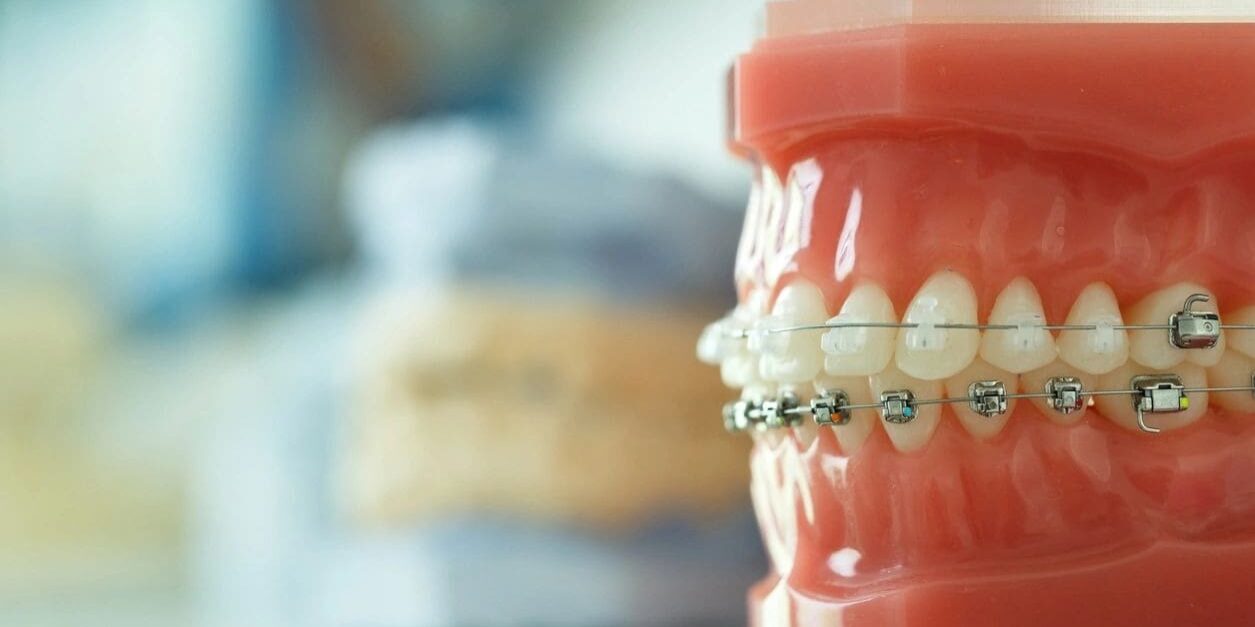
Retention

How Long is the Retention Phase?
When we remove your braces, or after the last aligner for Invisalign, we will begin the retention phase of your treatment. The retention phase lasts for a minimum of 3 years. Your final orthodontic result depends on your retainers, so follow through with the hard work you have put in so far. Remember to remove your retainer before brushing and to brush your retainer with toothpaste or mouthwash and COLD water before replacing it in your mouth. Removable retainers are worn full time for the first TWO MONTHS except for eating, brushing/flossing, and special occasions (singing, sports that require a mouth guard, etc.). After 2 months, you will cut down to night time wear. Over time, you will then reduce your wear to 2-3 nights per week as instructed when you come in for your retention appointments.
Factors Causing Movement in the Retention Phase
Recent studies have indicated that growth occurs in small amounts throughout life. Thus, teeth and jaws can shift at any time in varying degrees, which usually depend on the original malocclusion, the facial muscle structure and the amount of residual growth.
The retention phase of treatment allows for a majority of growth and settling to occur so that the teeth and jaws are as stable as possible. However, living tissue is always subject to change from posture, muscle pressure and oral habits such as biting your nails or clenching/grinding your teeth which can cause your teeth to shift. The eruption of teeth, dental restorations and the aging process all contribute to unwanted tooth movement.
Some believe that un-erupted third molars (wisdom teeth) are a factor in movement of teeth, but this has not been proven conclusively. Removal of third molars may be recommended due to lack of space for these teeth or due to a poor angle of eruption of these.
Lifetime Retention
The only way to maintain the tooth alignment indefinitely is with lifetime retention. This means wearing a removable retainer 2-3 nights a week on both the upper and lower arches, forever. The other option is to have a fixed retainer that is not removable. This is usually done on the lower arch only. Retainers are designed to maintain the teeth in their corrected positions. It is important that they be worn according to instructions. YOUR TEETH MAY RETURN TO THEIR ORIGINAL POSITIONS IF THIS RETAINER IS NOT WORN AS INSTRUCTED.

Taking Care of Your Retainers is Quite Easy
Use a toothbrush and either toothpaste or mouthwash to clean your retainers. They should be brushed whenever you brush your teeth when you are wearing them full time. When you cut down to wearing just at nights, clean them every morning. You can then soak them in mouthwash during the day if they start to smell. Soaking them in a denture cleaner is also a good method of deodorizing the retainers. Do not wear your retainers while eating. Always put your retainer in the case when it is not in your mouth. Never wrap it in a napkin or tissue as this is the number one reason we hear how retainers are lost.
Be careful where you place your retainers. Keep them out of reach of dogs. For some reason, dogs are attracted to the smell and like to chew on them. This is the number 2 reason why retainers need to be replaced. They are expensive to replace so please be careful with them and follow these instructions.
Always bring your retainers to your retention appointments.
Why a Fixed Bonded Retainer?
A bonded retainer is designed to maintain the position of several teeth. A small wire is bonded to the inside surface of your teeth and is not removable.
Avoid biting into anything hard with your front teeth, such as hard fruits and vegetables, hard breads or hard candy. Also avoid chewing sticky, chewy foods such as tootsie rolls and starburst in the area where your fixed retainer is. These things can break or loosen the bonded lingual retainer wire and will require coming into the office to repair the damage. Call us right away if this does happen. If you wait weeks to call us, your teeth may shift. After the third repair/replacement of a lingual fixed wire, there might be a fee for future repairs so be careful what and how you bite into things if you have a fixed retainer.
It is very important to keep this lingual wire clean. When flossing you will need to use a floss threaded or to floss vertically in this area. We will show you how this is done.
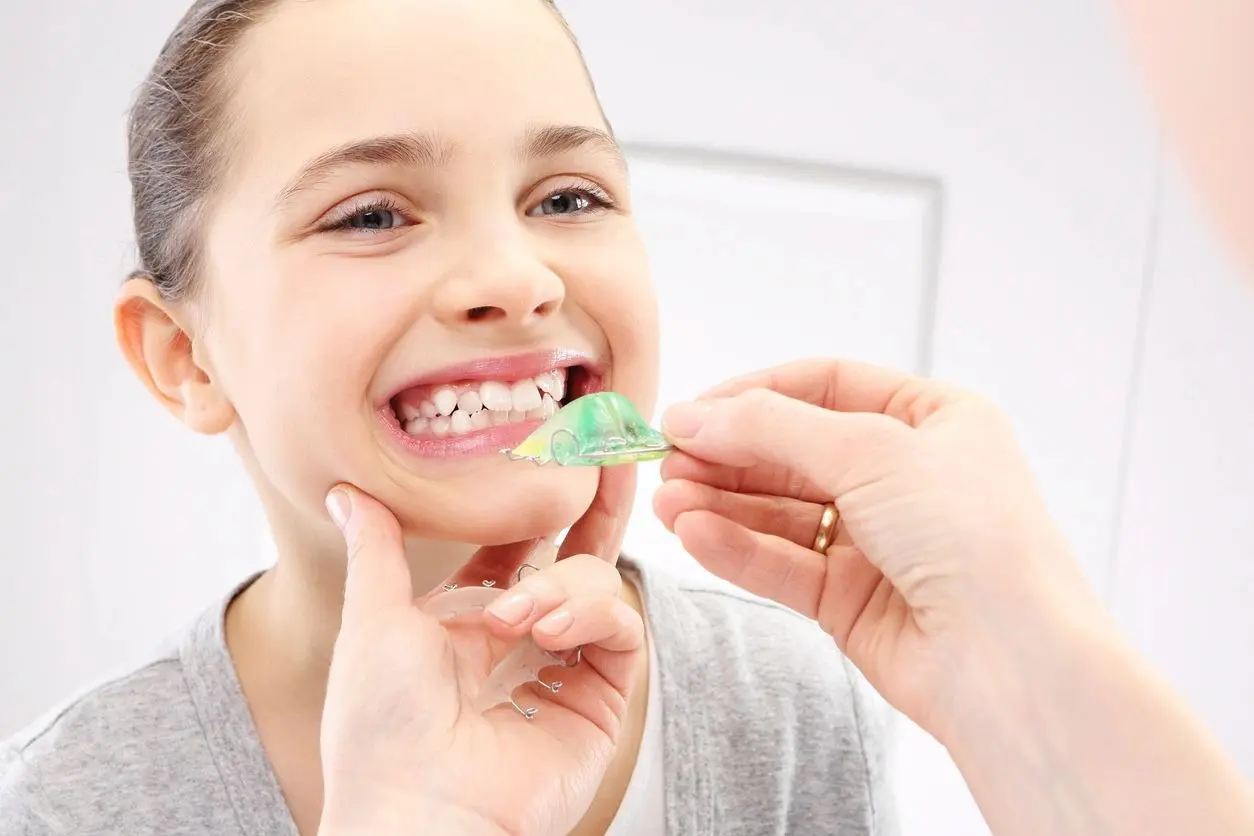
Emergency Protocol
True orthodontic emergencies rarely occur, but when they do, we are there for you. Though we hope that everything goes smoothly throughout, and after, your orthodontic treatment, sometimes they do not. Most problems that arise can easily be addressed at home or during normal office hours. However, some issues are more urgent and need to be addressed sooner. Please read below to see what to do.
Painful Swelling of the Face or Gums
Call the office immediately.
Tooth Discomfort
After the initial placement of the brackets, as well as after regular adjustments, the teeth will get sore. This discomfort usually only lasts 2-5 days and is mainly when pressure is applied to the teeth such as when eating. Taking medication that you would normally take for a headache such as Acetaminophen (Tylenol), Ibuprofen (Advil) or Naproxen (Aleve) can take the "edge off" until the discomfort goes away. If the general discomfort last longer than one week, please call the office.
Loose Bracket or Band
If a bracket or band on the back molar becomes loose, just leave it alone and call the office during normal business hours and we will set up an appointment to recement. If you are wearing an elastic to this tooth, stop wearing the elastic.
Removable Retainer Digging Into Gums
If this happens, stop wearing the retainer and call the office. If we are not in, leave a message and we will return your call and get you in to alleviate the problem.
Broken or Lost Rubber Band
If one of the small colored alastics comes off one of the braces, or if you have a power chain (small alastics all connected stretched across the brackets) that breaks, just call the office. It is not a real emergency and most times you do not have to come in until your next normal scheduled appointment.
Herbst Appliance
If you have a Herbst appliance and you lose the small hollow metal circle that is placed on the lower rod, it is not an emergency. Call the office and we will get you in at some point and replace it. If one of the metal crowns or tubes splits or cracks, then dial the emergency #.
Loose or Poking Wire
Try placing wax on the offending end of the wire or to try and adhere a loose wire to a bracket or band until we can get you into the office. If this does not work, you can use a cuticle cutter to cut the part of the wire that is poking you.
Loose Fixed Retainer Wire
If you have a wire behind your front teeth that is acting as your retainer, and a section of the wire becomes loose from the tooth, DO NOT pull the whole wire out. Instead, try using wax or chewed sugarless gum to stick on top of the offending wire until we can get you into the office to repair it. If this does not work and the wire is severely cutting into your tongue, call the emergency #.
Lost Invisalign Tray or Button
If you lose your current tray, go back and start wearing the previous tray full time and call the office and we will order you a new tray that was lost. If you had already worn the lost tray for more than 8 days, you can instead go on to the next tray # (if I gave it to you). Just call the office and let us know. If you lose a "button" which is the small piece of bonding placed on the teeth, call us during normal office hours and we will tell you what to do depending on which tray you are on.
Spacer Falls Out
If you are to get bands placed around the back molars and the small blue circular spacer falls out, let us know. Most of the time it is because there is adequate space created and the lack of tension causes them to fall out. It is not an emergency if you lose a spacer. Just call the office and we will let you know if it needs to be replaced.
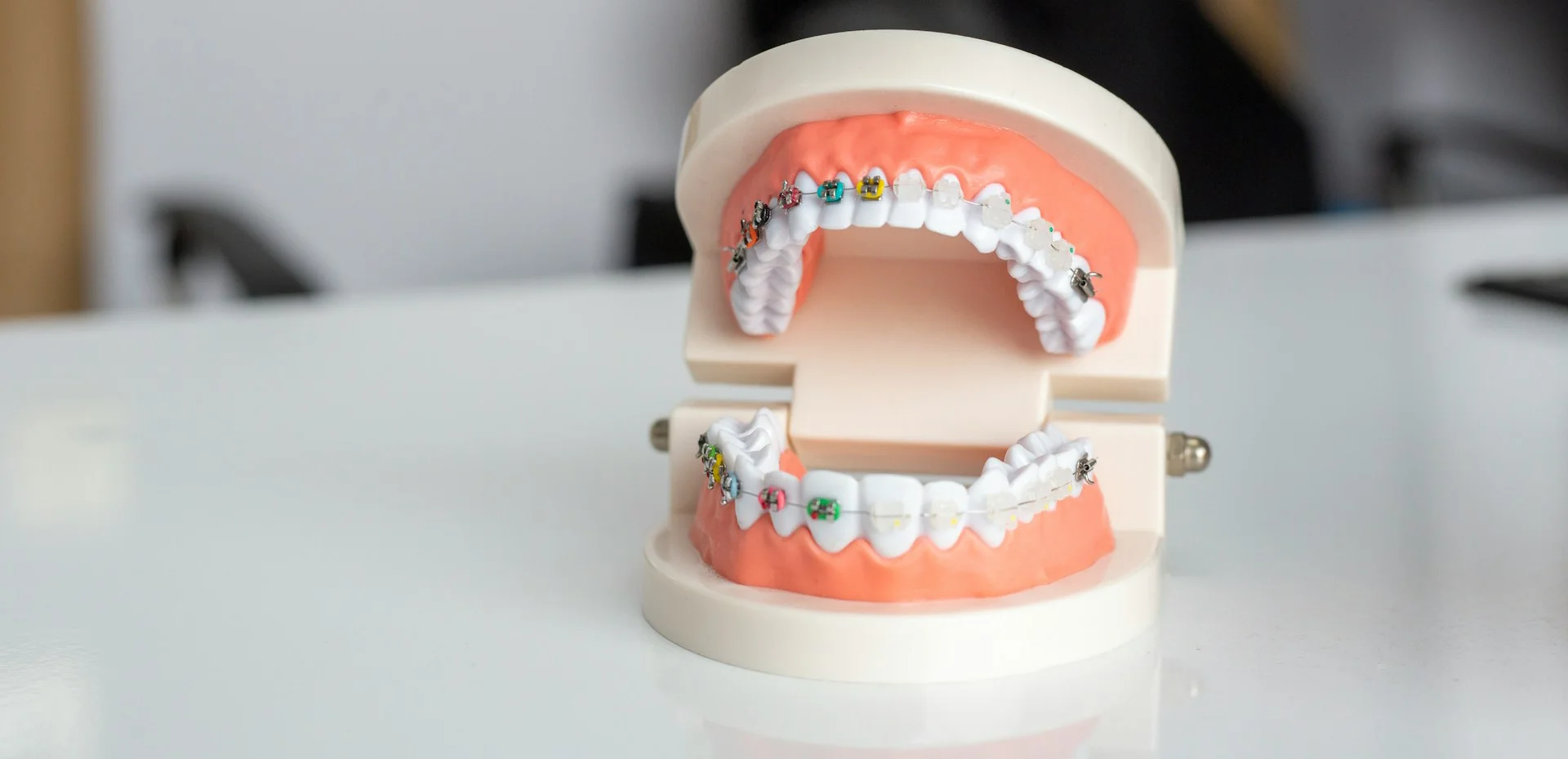
Emergency Protocol
True orthodontic emergencies rarely occur, but when they do, we are there for you. Though we hope that everything goes smoothly throughout, and after, your orthodontic treatment, sometimes they do not. Most problems that arise can easily be addressed at home or during normal office hours. However, some issues are more urgent and need to be addressed sooner. Please read below to see what to do.

Painful Swelling of the Face or Gums
Call the office immediately.
Loose or Poking Wire
Try placing wax on the offending end of the wire or to try and adhere a loose wire to a bracket or band until we can get you into the office. If this does not work, you can use a cuticle cutter to cut the part of the wire that is poking you.
Tooth Discomfort
After the initial placement of the brackets, as well as after regular adjustments, the teeth will get sore. This discomfort usually only lasts 2-5 days and is mainly when pressure is applied to the teeth such as when eating. Taking medication that you would normally take for a headache such as Acetaminophen (Tylenol), Ibuprofen (Advil) or Naproxen (Aleve) can take the "edge off" until the discomfort goes away. If the general discomfort last longer than one week, please call the office.
Loose Fixed Retainer Wire
If you have a wire behind your front teeth that is acting as your retainer, and a section of the wire becomes loose from the tooth, DO NOT pull the whole wire out. Instead, try using wax or chewed sugarless gum to stick on top of the offending wire until we can get you into the office to repair it. If this does not work and the wire is severely cutting into your tongue, call the emergency #.

Loose Bracket or Band
If a bracket or band on the back molar becomes loose, just leave it alone and call the office during normal business hours and we will set up an appointment to recement. If you are wearing an elastic to this tooth, stop wearing the elastic.
Lost Invisalign Tray or Button
If you lose your current tray, go back and start wearing the previous tray full time and call the office and we will order you a new tray that was lost. If you had already worn the lost tray for more than 8 days, you can instead go on to the next tray # (if I gave it to you). Just call the office and let us know. If you lose a "button" which is the small piece of bonding placed on the teeth, call us during normal office hours and we will tell you what to do depending on which tray you are on.
Removable Retainer Digging Into Gums
If this happens, stop wearing the retainer and call the office. If we are not in, leave a message and we will return your call and get you in to alleviate the problem.
Broken or Lost Rubber Band
If one of the small colored alastics comes off one of the braces, or if you have a power chain (small alastics all connected stretched across the brackets) that breaks, just call the office. It is not a real emergency and most times you do not have to come in until your next normal scheduled appointment.
Spacer Falls Out
If you are to get bands placed around the back molars and the small blue circular spacer falls out, let us know. Most of the time it is because there is adequate space created and the lack of tension causes them to fall out. It is not an emergency if you lose a spacer. Just call the office and we will let you know if it needs to be replaced.
Herbst Appliance
If you have a Herbst appliance and you lose the small hollow metal circle that is placed on the lower rod, it is not an emergency. Call the office and we will get you in at some point and replace it. If one of the metal crowns or tubes splits or cracks, then dial the emergency #.
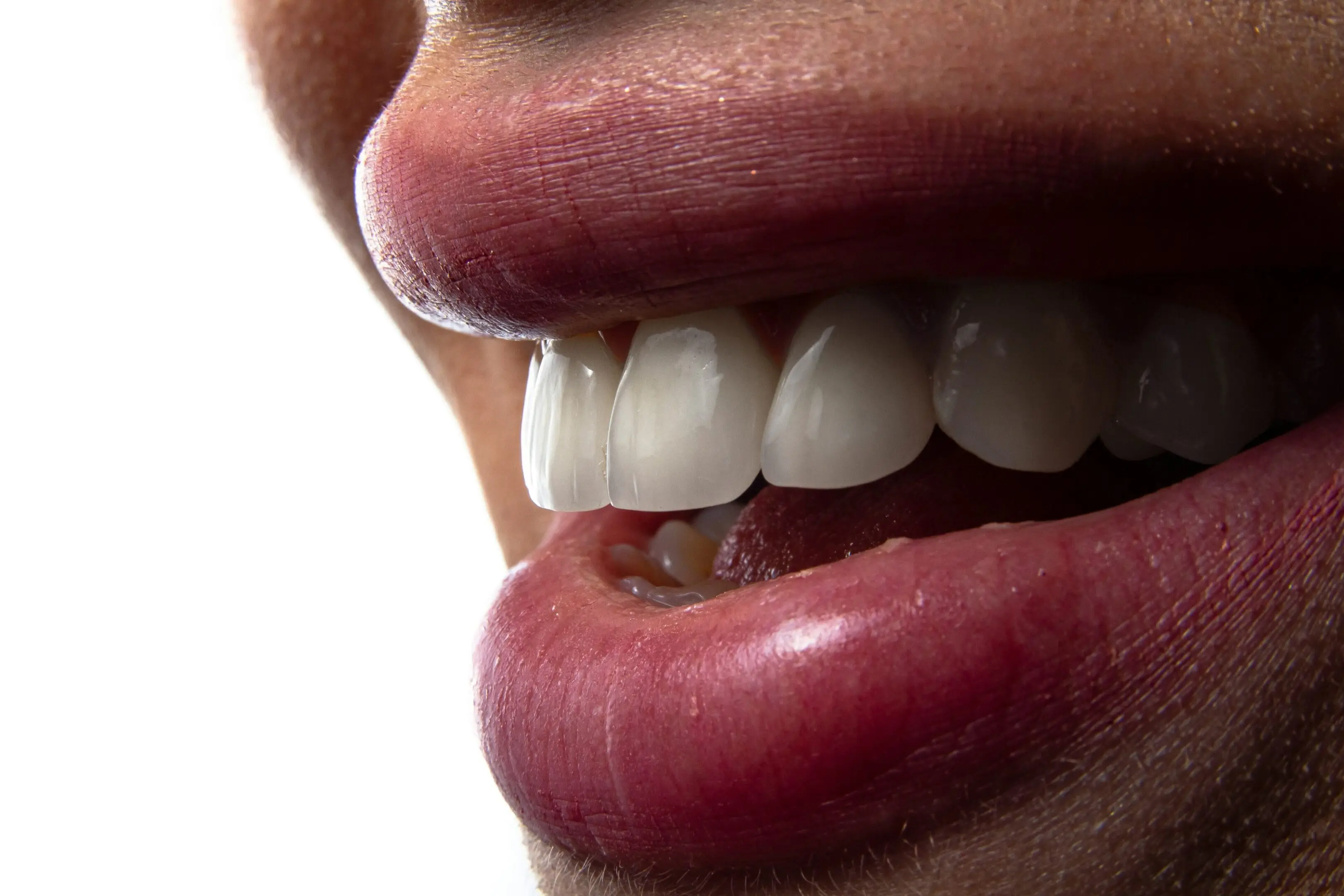
Oral Hygiene
If you thought brushing and flossing were important before you got braces…well, you were right. But people undergoing orthodontic treatment need to be even more dedicated to good oral hygiene.
Plaque is a mixture of bacteria, debris and bits of food. The bacteria feed on sugars and produce acids. The acids can irritate your gums, erode the enamel on your teeth and contribute to bad breath (halitosis).
It's important to remove the plaque thoroughly and often. Then, when your braces come off, the surfaces of your teeth underneath the braces will be healthy and strong and look good. Here are some tips to help you.
Brushing
Use a soft-bristle toothbrush. Soft bristles are better than medium or hard bristles at getting into those nooks and crannies around your braces. They also don't irritate your gums.
Some companies make toothbrushes especially for people with braces. Known as bi-level brushes, they have longer bristles on the edges and shorter ones in the middle. This type of brush allows you to clean the area above and below the brackets and the brackets as well.
The most important thing is to look for a brush that's soft and approved by the American Dental Association (ADA). After that, the size of the brush, the shape of the handle and other variations are up to you.
What about an electric toothbrush? It's not necessary, but if you have one, it's safe to use it on your braces. Just be careful not to hit the plastic back of the brush against the brackets on your braces because it can damage them. Also, it should be used on a moderate setting so as not to break or loosen braces.
Brush at least three times a day. It is best to brush after meals to make sure there's no food trapped in or around braces. If you are not able to brush after lunch, at least rinse your mouth with water very thoroughly.
Brush for at least two to three minutes each time. It's best to use a watch or timer to make sure you are brushing long enough.
Fluoride
Use a fluoride toothpaste. It doesn't really matter which one — just make sure it has the ADA seal of approval.
Your orthodontist may recommend that you use an over-the-counter fluoride rinse. These rinses usually provide enough fluoride to help protect and strengthen teeth during orthodontic treatment. However, if you have a history of cavities or are otherwise at risk of decay, your orthodontist may prescribe a rinse that contains more fluoride.
Consider an office treatment. You can get more fluoride — usually in the form of a gel or varnish — from your dentist during a regular visit. If you have a history of decay, your dentist may suggest this type of treatment. During orthodontic treatment, see your family dentist for a complete examination every six months, or as directed by your dentist.
Caring for Your Retainer
If you have a retainer or other removable orthodontic appliance, it needs to be cleaned regularly, too. After all, it spends a lot of time in your mouth.
Brush the appliance daily with your soft toothbrush and some toothpaste. This is especially important for the side that is in contact with the roof of your mouth or gums. Brush your retainer over a wash bowl filled with a few inches of water. That way, if it slips out of your hand it will not be damaged. You also can soak it in a cleaning solution. There are several that are advertised as denture cleaners. If you want to soak your retainer, talk to your orthodontist about which solution to use. Some cleaning solutions can corrode wires or other metallic areas on orthodontic appliances.
When brushing or soaking your appliance, never use hot water. It can distort the plastic and make the appliance unusable. When your retainer is not in your mouth, keep it in the case that your orthodontist gave you. Also, keep it away from your pets. Dogs and cats love the plastic and will chew it to bits if they get it.
Flossing
Floss at least once a day. It might seem like you can't possibly floss while you have braces, but you can and you should. Special flossing products can help you get into the space between the wires and your gumline. These include floss threaders and a special kind of floss. When your braces are first put on, someone in your orthodontist's office should review flossing techniques. If you're not sure you're doing it right, ask your orthodontist during your next visit.
Tools to Help You
Rubber-tipped and end-tuft or single-tuft brushes — These are special brushes that help you to get into those nooks and crannies, as well as between your teeth. The end-tuft or single-tuft brushes look something like pipe cleaners.
Oral irrigators — These instruments shoot small streams of water onto your teeth at high pressure to remove bits of food. They also should be used at a moderate setting so they don't damage the braces.
Disclosing solutions or tablets — Your dentist may have used these during an office visit to see where you tend to miss spots after brushing. Disclosing tablets and solutions use vegetable dye to highlight plaque or debris in your mouth. You can find them in a drugstore or get some from your dentist and use them at home.
If you have questions about how to use any oral hygiene product, even your toothbrush, call your orthodontist's office or talk to someone there during your next visit.
Eating Right
While you're wearing braces, you need to think twice about eating foods that could increase your risk of cavities. You also should avoid anything that might damage your brackets or wires. Frequently breaking your braces will add to the overall treatment time.
Stay away from hard and sticky foods. Caramel, hard candy, gum - you get the idea. They can damage your braces and get stuck in the wires and brackets. While the food's stuck there, it provides lots of sugar for cavity-causing bacteria to munch on. Also, do not chew on ice cubes.
Cut down on all sugary foods. You can still have a limited amount of sweets and soda, but the more sugars you eat, the greater your risk of tooth decay. Always brush after eating sugary foods or candy.
It's not just what you eat, but also when you eat it. Frequent snacking on sugary foods is worse than eating those foods with a non-sugary meal. Don't eat sugary foods or candy before going to bed without brushing. The more chances you give the bacteria to turn sugars into acids, the higher your risk of decay.
Dental Visits
Don't ignore your dentist just because you're visiting an orthodontist regularly. It is still important to visit your dentist for a checkup and cleaning. You should go at least twice a year, or as often as your dentist and orthodontist recommend.
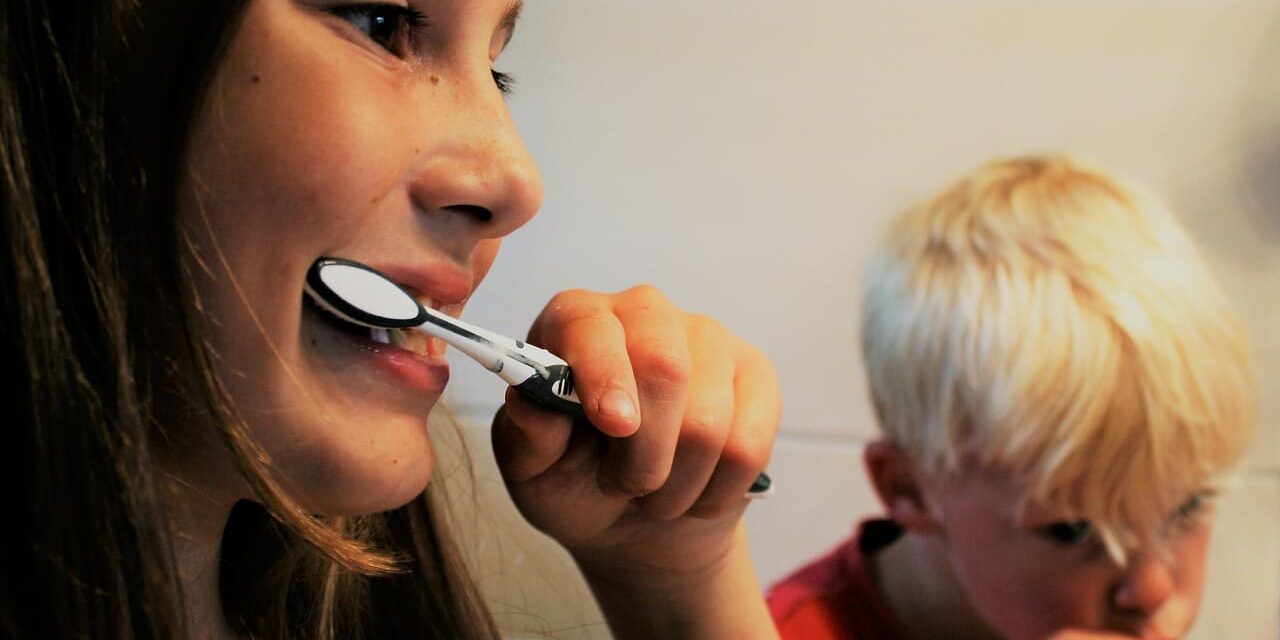
Oral Hygiene
If you thought brushing and flossing were important before you got braces…well, you were right. But people undergoing orthodontic treatment need to be even more dedicated to good oral hygiene.
Plaque is a mixture of bacteria, debris and bits of food. The bacteria feed on sugars and produce acids. The acids can irritate your gums, erode the enamel on your teeth and contribute to bad breath (halitosis).
It's important to remove the plaque thoroughly and often. Then, when your braces come off, the surfaces of your teeth underneath the braces will be healthy and strong and look good. Here are some tips to help you.
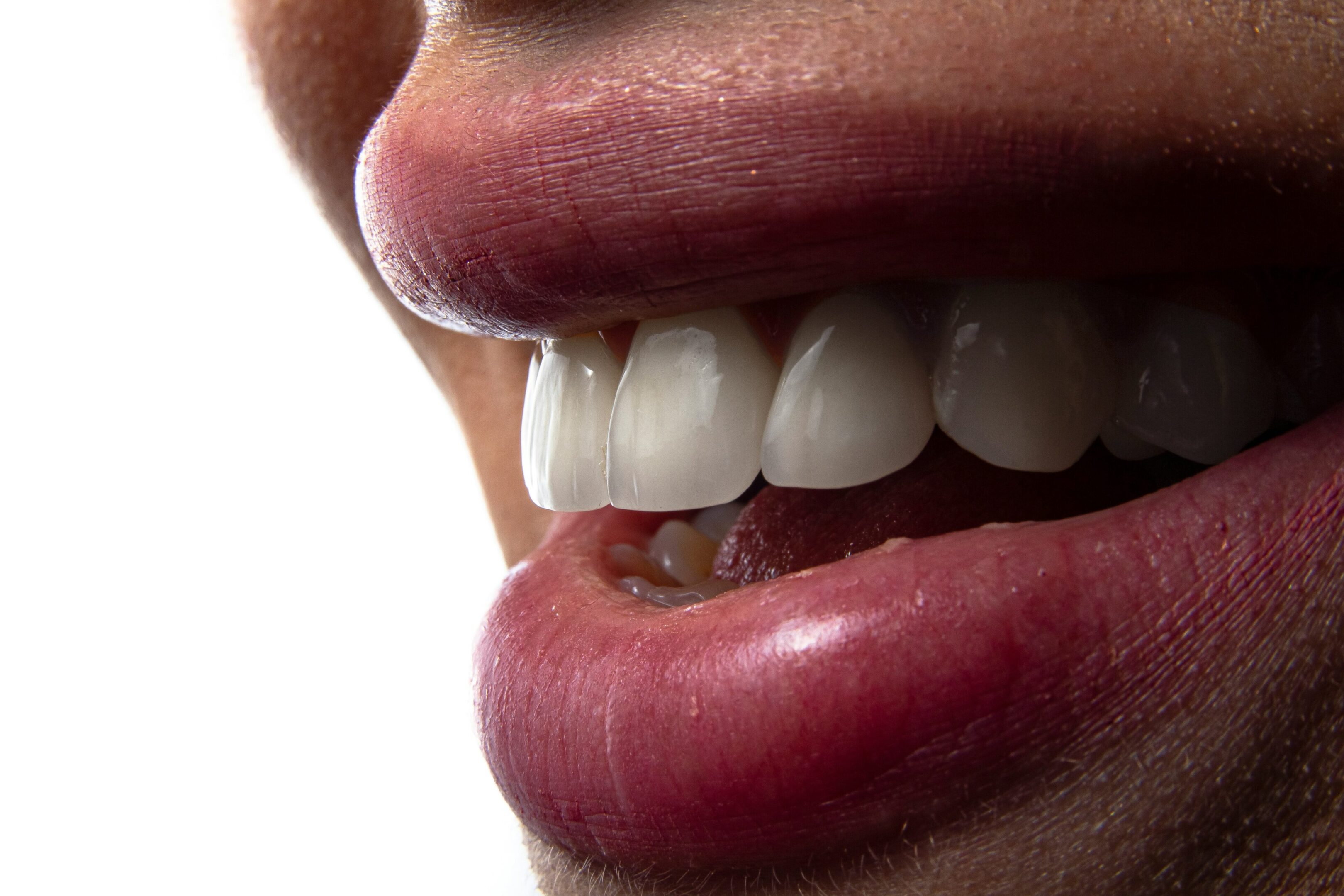
Brushing
Use a soft-bristle toothbrush. Soft bristles are better than medium or hard bristles at getting into those nooks and crannies around your braces. They also don't irritate your gums.
Some companies make toothbrushes especially for people with braces. Known as bi-level brushes, they have longer bristles on the edges and shorter ones in the middle. This type of brush allows you to clean the area above and below the brackets and the brackets as well.
The most important thing is to look for a brush that's soft and approved by the American Dental Association (ADA). After that, the size of the brush, the shape of the handle and other variations are up to you.
What about an electric toothbrush? It's not necessary, but if you have one, it's safe to use it on your braces. Just be careful not to hit the plastic back of the brush against the brackets on your braces because it can damage them. Also, it should be used on a moderate setting so as not to break or loosen braces.
Brush at least three times a day. It is best to brush after meals to make sure there's no food trapped in or around braces. If you are not able to brush after lunch, at least rinse your mouth with water very thoroughly.
Brush for at least two to three minutes each time. It's best to use a watch or timer to make sure you are brushing long enough.
Flossing
Floss at least once a day. It might seem like you can't possibly floss while you have braces, but you can and you should. Special flossing products can help you get into the space between the wires and your gumline. These include floss threaders and a special kind of floss. When your braces are first put on, someone in your orthodontist's office should review flossing techniques. If you're not sure you're doing it right, ask your orthodontist during your next visit.
Fluoride
Use a fluoride toothpaste. It doesn't really matter which one — just make sure it has the ADA seal of approval.
Your orthodontist may recommend that you use an over-the-counter fluoride rinse. These rinses usually provide enough fluoride to help protect and strengthen teeth during orthodontic treatment. However, if you have a history of cavities or are otherwise at risk of decay, your orthodontist may prescribe a rinse that contains more fluoride.
Consider an office treatment. You can get more fluoride — usually in the form of a gel or varnish — from your dentist during a regular visit. If you have a history of decay, your dentist may suggest this type of treatment. During orthodontic treatment, see your family dentist for a complete examination every six months, or as directed by your dentist.

Tools to Help You
Rubber-tipped and end-tuft or single-tuft brushes — These are special brushes that help you to get into those nooks and crannies, as well as between your teeth. The end-tuft or single-tuft brushes look something like pipe cleaners.
Oral irrigators — These instruments shoot small streams of water onto your teeth at high pressure to remove bits of food. They also should be used at a moderate setting so they don't damage the braces.
Disclosing solutions or tablets — Your dentist may have used these during an office visit to see where you tend to miss spots after brushing. Disclosing tablets and solutions use vegetable dye to highlight plaque or debris in your mouth. You can find them in a drugstore or get some from your dentist and use them at home.
If you have questions about how to use any oral hygiene product, even your toothbrush, call your orthodontist's office or talk to someone there during your next visit.
Caring for Your Retainer
If you have a retainer or other removable orthodontic appliance, it needs to be cleaned regularly, too. After all, it spends a lot of time in your mouth.
Brush the appliance daily with your soft toothbrush and some toothpaste. This is especially important for the side that is in contact with the roof of your mouth or gums. Brush your retainer over a wash bowl filled with a few inches of water. That way, if it slips out of your hand it will not be damaged. You also can soak it in a cleaning solution. There are several that are advertised as denture cleaners. If you want to soak your retainer, talk to your orthodontist about which solution to use. Some cleaning solutions can corrode wires or other metallic areas on orthodontic appliances.
When brushing or soaking your appliance, never use hot water. It can distort the plastic and make the appliance unusable. When your retainer is not in your mouth, keep it in the case that your orthodontist gave you. Also, keep it away from your pets. Dogs and cats love the plastic and will chew it to bits if they get it.
Eating Right
While you're wearing braces, you need to think twice about eating foods that could increase your risk of cavities. You also should avoid anything that might damage your brackets or wires. Frequently breaking your braces will add to the overall treatment time.
Stay away from hard and sticky foods. Caramel, hard candy, gum - you get the idea. They can damage your braces and get stuck in the wires and brackets. While the food's stuck there, it provides lots of sugar for cavity-causing bacteria to munch on. Also, do not chew on ice cubes.
Cut down on all sugary foods. You can still have a limited amount of sweets and soda, but the more sugars you eat, the greater your risk of tooth decay. Always brush after eating sugary foods or candy.
It's not just what you eat, but also when you eat it. Frequent snacking on sugary foods is worse than eating those foods with a non-sugary meal. Don't eat sugary foods or candy before going to bed without brushing. The more chances you give the bacteria to turn sugars into acids, the higher your risk of decay.
Dental Visits
Don't ignore your dentist just because you're visiting an orthodontist regularly. It is still important to visit your dentist for a checkup and cleaning. You should go at least twice a year, or as often as your dentist and orthodontist recommend.